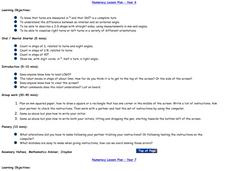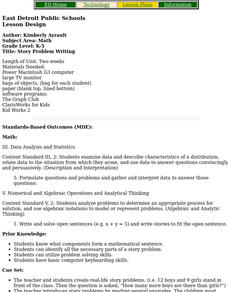Curated OER
Numeracy Lesson Plans
Students complete a series of lesson plans dealing with numbers, counting, and ordering. In this numbers lesson plan, students identify numbers, identify number patterns, count forwards and backwards, and more.
Curated OER
ExplorA-Pond: 1st Grade Addition
First graders explore the shoreline of a local or virtual pond and count the number of bushes and trees present in the area they are assigned. They then, as a class, add the numbers of bushes and trees together to determine the total...
Pennsylvania Department of Education
What Balances?
Students explore another meaning of subtraction as it pertains to the inverse of addition. In this what balances lesson, students identify the concept of subtraction as a balance. Students use subtraction facts to generate addition...
Pennsylvania Department of Education
Alike and Different
Students compare and contrast objects and are introduced to a Venn Diagram. In this alike and different lesson plan, students make observations regarding properties of objects. Students classify object and build ideas about variables....
Curated OER
Numbers Up
Students use Legos to build representations of a variety of numbers. They then sort and order their representations and pair them with the written number.
Curated OER
the Whale Game
Students listen to whale stories and answer addition and subtraction problems in the stories. For this addition and subtraction lesson, students receive 20 goldfish. Based on the story they eat the goldfish. Students write number...
Curated OER
Story Problem Writing
Students write story problems which can only be solved with the application of multiplication facts. They write an extra fact that isn't needed to solve. When their partners do the problems, they must cross out the fact that they do need.









